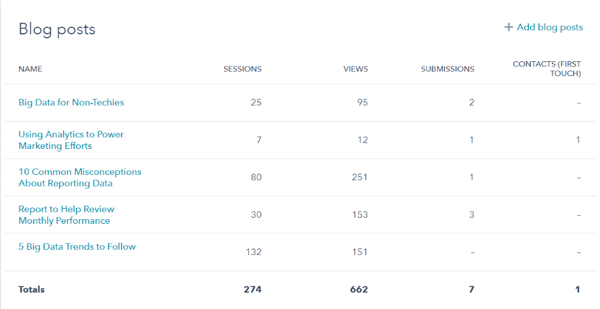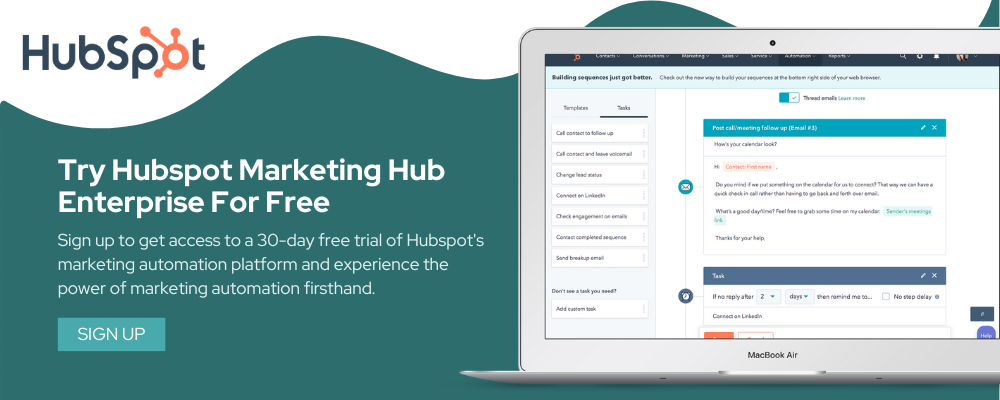Survival Of The Fittest: How To Create A Leaner, More Agile Marketing Organization
I cannot believe it is January already. I love this time of the year — the opportunity to reflect on past successes and mistakes, to re-align one's priorities, and to make ambitious plans for the year ahead. I truly enjoy sitting down with my clients at the end of the year, going through their plans for the next 12 months, and turning them into actionable milestones for the next year.
As I reflected this year, I saw a common theme emerge from my most successful clients. They are consistently and deliberately setting themselves up for the future by creating a leaner, more agile marketing organization that is ready for whatever comes next by:
- Investing in long-term initiatives that contribute to overarching business goals,
- Insisting that investments have a measurable return-on-investment,
- Emphasizing ongoing improvements rather than one-off projects,
- Revisiting and simplifying their marketing technology stack, and
- Knowing when it's okay to take a short-cut — and when it isn't.
Marketing is bound to undergo massive change in the next three to five years. Just think about the impact artificial intelligence, big data, and marketing automation will have or how the scope of marketing will change to enable and drive Digital Transformation. But to be able to take full advantage, you will need to get your organization to this leaner, more agile state to be successful! Let's go through each step in more detail.
Always Contribute To Higher Business Goals
While aligning our marketing goals with overarching business goals sounds theoretically obvious, it isn't something that is done enough in reality.
It's not something we as marketers intentionally ignore or avoid. It's only too natural to get stuck in trying to get through our never-ending to-do list, so we often times forget to take a step back and consider how our work in general and each of our projects in particular contributes to our company's bottom line.
But here is something I want you to remember:
Only 51% of marketers can confidently say that they have increased their organization's sales. (Source)
And a staggering estimated 60-70% of B2B content created is never used — most of the time because the topic is irrelevant and does not align with the audience's needs.
Ouch! On the flip side, companies that do align their marketing and sales goals find that they are 67% better at closing deals and generate 208% more revenue. They also saw significant increases in customer retention.
So, this year as you are planning your editorial calendar and campaigns, ask yourself:
 Which overall business goal does this campaign support and how? What tangible business outcomes am I hoping to achieve with this?
Which overall business goal does this campaign support and how? What tangible business outcomes am I hoping to achieve with this?- How many actual customers will this particular blog post, landing page, or pillar page help generate — directly or indirectly?
- How much revenue will be generated as a result of sending a promotional email or triggering an email workflow?
You get the idea.
Always Measure Your Marketing ROI
According to the 2018 B2B Content Marketing Institute Report, only 35% of respondents measure their return-on-investment in content marketing — which is quite surprising given that, on average, 26% of an organization's entire marketing budget is earmarked for content creation, publication, and distribution.
When asked why they are not tracking their content's ROI, respondents mainly named four reasons:
- They don't feel like there is any formal justification to do so, or in other words, their executive management doesn't require them to measure it (38%).
- They feel it is too hard to do (38%).
- They don’t know how to do it (27%).
- It is too time-consuming (21%).
While tracking and measuring your ROI is not required yet, it most certainly will be in the near future. Having a marketing automation tool, like HubSpot, will enable you to see exactly how each blog post, landing page, website page, social media post, and so on contributed to your success and enables you easily and quickly to measure your ROI.
And if you need a little more convincing (or want to get your management on board) here is an interesting statistic for you. There is a direct correlation between measuring your ROI and your performance: 55% of the most successful respondents were measuring their return-on-investment — almost three times more compared to the least successful marketers that measured their ROI (18%).
Think Subscriptions Rather Than One-Off Projects
Subscriptions and Software/Desktop/Device/You-Name-It-as-a-Service are all the rage nowadays.
For example, my kids love their RaddishKids boxes! Every month, they get kid-friendly recipes, cooking tools, and more to learn how to make several dishes. We conveniently get dog treats, toothpaste, and vitamins refilled every month through Amazon Subscribe & Save or other services. It's convenient, often saves us money, and ensures we never accidentally run out.
A subscription-based model works especially well for digital products such as business applications and software (think Gmail Business Applications, Office 365 or QuickBooks Online) or ... websites and inbound marketing. In addition to the lower investment and convenience, subscription-based services exponentially improve in terms of performance and security over time.
In terms of a website redesign, this means launching quickly with a smaller website that fulfills 80% of the business needs with 20% of the input. This so-called Launchpad website is the starting point for strategically-planned continuous improvements. The performance of every change gets tracked, and actual user feedback and behavior are analyzed to adjust as needed and inform future decisions — making the the highest impact redesign possible.
[Learn more by downloading our 101 Introduction Guide to Growth-Driven Design.]
Revisit Your Marketing Technology Stack
In 2017, Cisco shared its marketing stack and got a lot of criticism for deploying 39 different marketing tools. However, upon closer examination, you won't find any significant overlap within their stack. Quite the opposite — it is very rationalized.
This is confirmed by a 2017 Internet Trends study that shows that the average enterprise uses 91 marketing cloud services — not including many more for collaboration, CRM, cloud storage, and social media!
While you might not have that many, most smaller businesses have between 15 to 30 different tools. Just think about your website/blog/landing page hosting, email marketing, social media posting and monitoring, marketing automation, project management, collaboration, ad and paid media management, chat bot software, customer relationship management, and reporting. Depending on your marketing strategy, this could easily be 15 tools right here. Unless you have HubSpot which combines all of those tools into one cohesive platform — which was a game changer for us as an agency and business.
My point is not that you have to switch to Hubspot (although I recommend you let us set up a free 30-day trial for you to try it out), but is that you simplify and rationalize your portfolio as much as possible by:
- Listing all applications and cloud services you are currently licensing or have access to,
- Finding out who is using what and how often,
- Examining them for functional overlap, and
- Deciding which application(s) should be retired or replaced.
You will be surprised at how many applications you have that are unused or overlapping. This won't only save you money in licensing costs, but will also make you and your team more productive in the long run.
Know Where To Take A Short-Cut & Where Not To
One of the biggest mistakes that I see companies make is to try and take short-cuts in places where it is not advisable to cut corners. For example, skimping on doing proper buyer persona research, putting together an editorial calendar, or hiring quality writers — this will always lead to sub-par results!
![]() However, there are many places where it is not only possible but a great idea to take a short-cut. For example, if you have written an extremely helpful and very long article or pillar page, why not create a downloadable version and offer it to your readers so they can save your article for offline use?
However, there are many places where it is not only possible but a great idea to take a short-cut. For example, if you have written an extremely helpful and very long article or pillar page, why not create a downloadable version and offer it to your readers so they can save your article for offline use?
You could copy and paste it into Word or Google Docs and create a simple PDF, or you can use a fantastic tool called Beacon.by that hooks up into your (HubSpot) blog and creates a professional looking eBook within minutes.
Another clever way to reuse the content you worked so hard on is to take a webinar you gave and recorded, and then offer it as an on-demand webinar to your visitors that either couldn't attend or signed up after the webinar date. These are just two small examples, but there are dozens more. Just use common sense and always have your user in mind.
Conclusion & Next Steps
I believe 2019 will be a transitional year in which we should prepare ourselves to meet the responsibilities that come with Digital Transformation and get ready for an Artificial Intelligence, chat bot, and automation-driven marketing future. All these steps I have outlined above will put you in a great starting position as they make your entire marketing organization and operation leaner, more agile, and ready for change.
Share this
You May Also Like
These Related Stories

Inbound Marketing vs. They Ask, You Answer: What Is Better?

Impact Coach vs. Independent Certified Coach For Your They Ask You Answer Implementation

.png?width=250&height=125&name=TrustBuilderLogoWhiteTranspBackgr(250x125%20px).png)



No Comments Yet
Let us know what you think